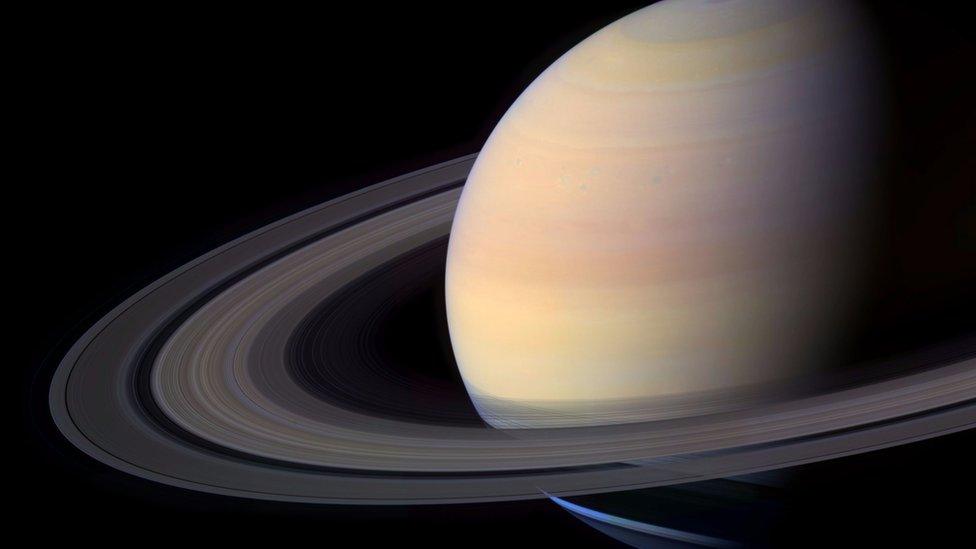Saturn mission approaches tour finale
- Published

The end phases of the mission should yield new information about Saturn's interior
The Cassini spacecraft is beginning the end phases of its mission to Saturn.
Having spent 12 years flying around the ringed planet and its moons at a relatively safe distance, the probe is now about to undertake a series of daredevil manoeuvres.
These will see the satellite repeatedly dive extremely close to - and through - the rings over the next nine months.
The manoeuvres will culminate in Cassini dumping itself in the atmosphere of the giant planet.
This destructive ending is necessary because the spacecraft is running low on fuel.
Nasa (US space agency), which leads the Cassini mission, external, needs to make sure that an out-of-control probe cannot at some future date crash into any of Saturn’s moons - in particular, Enceladus and Titan.
There is a chance these moons harbour life, and however remote the possibility - a colliding satellite could introduce contamination from Earth. This must not be allowed to happen.
But in the lead up to its safe disposal - set for 15 September next year - Cassini should gather some remarkable science.
Starting on Wednesday, Cassini will repeatedly climb high above Saturn's north pole before then plunging to a point just outside the F ring (the outer boundary of the main ring system).
The probe will do 20 such orbits, even sampling some of the particles and gases associated with the F ring.

Artwork: Cassini plunging between the rings and the planet's cloudtops
Starting on 22 April next year, Cassini will then initiate a series of dives that take it in between the inner edge of the rings and the planet’s atmosphere.
On occasion, it could pass less than 2,000km above Saturn’s cloud tops.
As well as returning some spectacular imagery of the rings and moonlets previously seen only from a large distance, these upcoming manoeuvres are designed to permit close-up investigation of Saturn’s interior.
“One of the big outstanding questions at Saturn, for example, is: we don’t know how long a day is. We have a large error. It’s 10.7 hours plus or minus 0.2 hours,” said magnetic field instrument principal investigator, Prof Michele Dougherty.
“Come and ask me afterwards but I think what we learn about the internal structure of the planet could be among the great discoveries of mission,” the Imperial College London, UK, scientist told BBC News.
Interestingly, many of the unknowns at Saturn are similar to the ones also now being pursued by Nasa’s Juno spacecraft at Jupiter - fascinating mysteries such as whether there is a solid core at the planet's centre.
“It’s as if we’re about to do a whole new mission at Saturn - a Juno-type mission at Saturn,” said Prof Dougherty.
Cassini is a cooperative venture between Nasa, the European Space Agency and the Italian space agency.
The probe launched in 1997 and arrived at Saturn in July 2004.
Key discoveries have included the determination that Enceladus is spewing water into space from a sub-surface ocean, and that Titan is a strange Earth-like world where lakes and seas are fed by rivers and rain - except that all the liquid is made up of hydrocarbons such as methane.
Jonathan.Amos-INTERNET@bbc.co.uk, external and follow me on Twitter: @BBCAmos, external